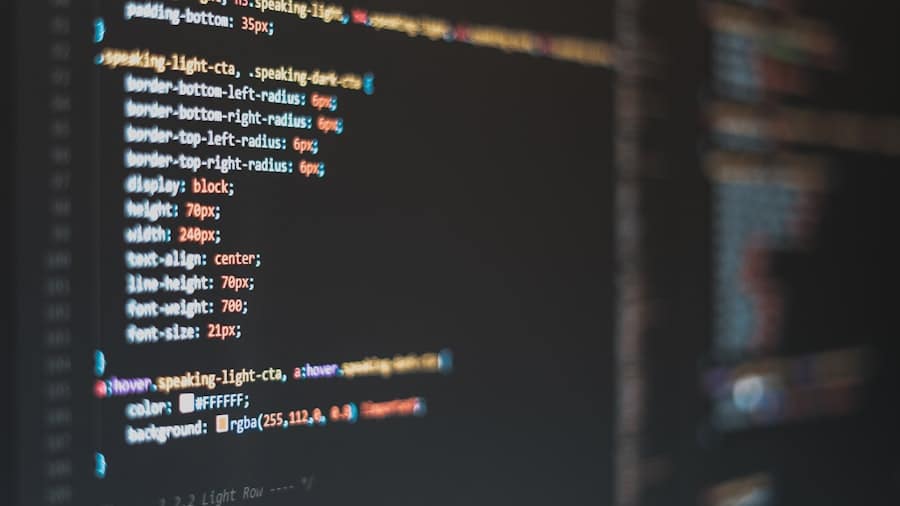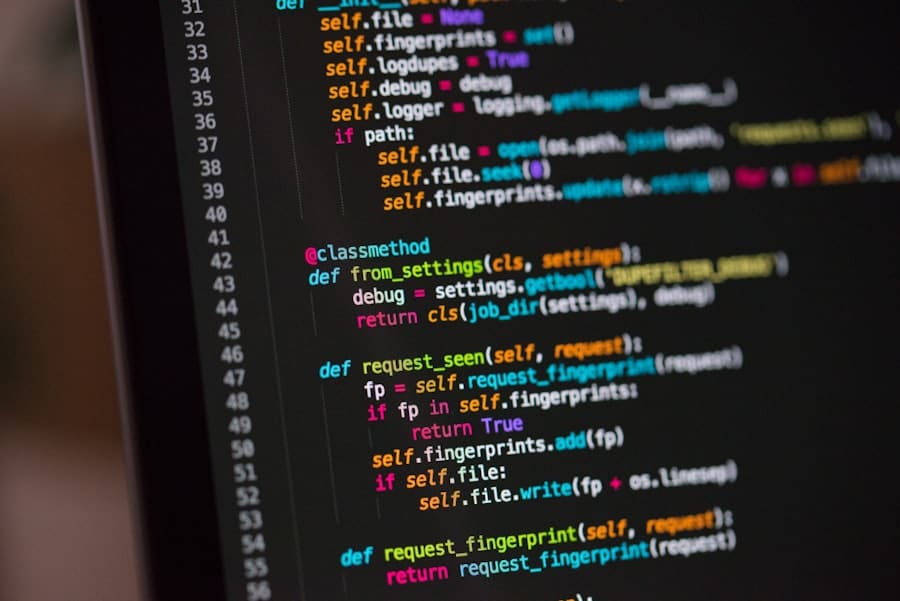In an era where cyber threats are increasingly sophisticated, the significance of secure coding standards cannot be overstated. Secure coding standards serve as a foundational framework that guides developers in writing code that is resilient against vulnerabilities and exploits. These standards are not merely a set of guidelines; they represent a proactive approach to software development that prioritizes security at every stage of the lifecycle.
By adhering to these standards, organizations can significantly reduce the risk of security breaches, which can lead to financial loss, reputational damage, and legal repercussions. Moreover, secure coding standards foster a culture of security awareness among developers. When developers are equipped with knowledge about potential vulnerabilities and the best practices to mitigate them, they become more vigilant in their coding practices.
This cultural shift is essential in today’s fast-paced development environments, where the pressure to deliver features quickly can often overshadow security considerations. By embedding secure coding principles into the development process, organizations not only protect their assets but also enhance the overall quality and reliability of their software products.
Key Takeaways
- Secure coding standards are important for preventing security vulnerabilities and ensuring the overall security of software applications.
- Implementing secure coding standards in DevSecOps helps to integrate security into the development process from the beginning.
- Integrating secure coding practices into the development process involves incorporating security measures and best practices into the coding and testing phases.
- Best practices for creating secure coding standards include using industry-recognized guidelines, conducting regular code reviews, and providing training for developers.
- Training and education on secure coding standards for development teams is essential for ensuring that all team members understand and follow the established standards.
Implementing Secure Coding Standards in DevSecOps
The integration of secure coding standards within a DevSecOps framework is crucial for creating a robust security posture. DevSecOps emphasizes the collaboration between development, security, and operations teams, ensuring that security is not an afterthought but an integral part of the development process. Implementing secure coding standards in this context involves establishing clear protocols and practices that all team members must follow.
This includes defining specific coding practices that address common vulnerabilities such as SQL injection, cross-site scripting (XSS), and buffer overflows. To effectively implement these standards, organizations can leverage automated tools that enforce compliance during the coding process. Static application security testing (SAST) tools can analyze code in real-time, identifying potential vulnerabilities before they make it into production.
Additionally, integrating security checks into continuous integration/continuous deployment (CI/CD) pipelines ensures that any code changes are automatically evaluated against the established secure coding standards. This not only streamlines the development process but also instills a sense of accountability among developers, as they are aware that their code will be scrutinized for security flaws.
Integrating Secure Coding Practices into the Development Process
Integrating secure coding practices into the development process requires a multifaceted approach that encompasses various stages of software development. From the initial design phase to deployment and maintenance, security considerations should be woven into every aspect of the project. During the design phase, threat modeling can be employed to identify potential security risks associated with different architectural choices.
This proactive measure allows teams to address vulnerabilities before they manifest in the code. As development progresses, regular code reviews become essential for maintaining adherence to secure coding standards. Peer reviews not only help catch potential security issues but also promote knowledge sharing among team members.
Developers can learn from each other’s experiences and insights, fostering a collaborative environment where security is a shared responsibility. Furthermore, incorporating secure coding practices into testing phases—such as dynamic application security testing (DAST)—ensures that applications are rigorously evaluated for vulnerabilities before they are released to production.
Best Practices for Creating Secure Coding Standards
Creating effective secure coding standards involves several best practices that ensure clarity, relevance, and applicability across various projects. First and foremost, these standards should be tailored to the specific technologies and frameworks used by the organization. Generic guidelines may not adequately address the unique challenges posed by different programming languages or platforms.
Therefore, it is essential to involve developers in the creation process to ensure that the standards are practical and grounded in real-world scenarios. Another best practice is to prioritize the most critical vulnerabilities based on industry standards such as the OWASP Top Ten. By focusing on high-risk areas first, organizations can allocate resources effectively and make significant strides in improving their security posture.
Additionally, it is vital to keep these standards up-to-date with emerging threats and evolving technologies. Regular reviews and updates should be scheduled to incorporate new findings from security research and lessons learned from past incidents.
Training and Education on Secure Coding Standards for Development Teams
Training and education play a pivotal role in ensuring that development teams understand and adhere to secure coding standards. Organizations should invest in comprehensive training programs that cover not only the technical aspects of secure coding but also the underlying principles of security awareness. Workshops, seminars, and online courses can provide developers with hands-on experience in identifying and mitigating vulnerabilities in their code.
Moreover, fostering a culture of continuous learning is essential for keeping developers engaged with secure coding practices. Encouraging participation in security conferences or hackathons can expose team members to new ideas and techniques while reinforcing the importance of security in their daily work. Additionally, mentorship programs can pair experienced developers with less experienced ones, facilitating knowledge transfer and promoting best practices within teams.
Measuring the Effectiveness of Secure Coding Standards in DevSecOps
To assess the effectiveness of secure coding standards within a DevSecOps framework, organizations must establish clear metrics and key performance indicators (KPIs). These metrics can include the number of vulnerabilities detected during code reviews, the frequency of security-related incidents post-deployment, and the time taken to remediate identified vulnerabilities. By analyzing these data points, organizations can gain insights into how well their secure coding practices are being implemented and where improvements may be needed.
Furthermore, conducting regular audits and assessments can provide a more comprehensive view of compliance with secure coding standards. These audits can involve both automated tools and manual reviews to ensure a thorough evaluation of code quality and security posture. Feedback from these assessments should be used to refine training programs and update secure coding standards as necessary, creating a feedback loop that continuously enhances security practices within the organization.
Addressing Common Challenges in Implementing Secure Coding Standards
Implementing secure coding standards is not without its challenges. One common obstacle is resistance from developers who may perceive these standards as an impediment to their workflow or creativity. To overcome this resistance, it is crucial to communicate the benefits of secure coding clearly—emphasizing how these practices ultimately lead to higher-quality software and reduced maintenance costs due to fewer vulnerabilities.
Another challenge lies in keeping pace with rapidly evolving technologies and threat landscapes. As new programming languages, frameworks, and attack vectors emerge, organizations must remain vigilant in updating their secure coding standards accordingly. This requires ongoing collaboration between development teams and security experts to ensure that standards reflect current best practices and address emerging threats effectively.
The Future of Secure Coding Standards in DevSecOps
The future of secure coding standards within DevSecOps is likely to be shaped by advancements in automation and artificial intelligence (AI). As machine learning algorithms become more sophisticated, they will enable more accurate detection of vulnerabilities during the coding process. Automated tools will increasingly assist developers by providing real-time feedback on potential security issues as they write code, thereby reducing reliance on manual reviews.
This includes considerations for container security, API vulnerabilities, and third-party dependencies. The integration of secure coding practices into DevSecOps will become more seamless as organizations adopt a holistic approach to security that encompasses not just code but also infrastructure and operational practices.
In conclusion, as cyber threats continue to evolve, so too must our approaches to secure coding standards within DevSecOps frameworks. By fostering a culture of security awareness, investing in training, leveraging automation, and continuously refining best practices, organizations can build resilient software systems that stand up against an ever-changing threat landscape.
In addition to understanding the importance of secure coding standards in DevSecOps, it is also crucial to consider the hardware and software tools being used in the development process. For example, when implementing secure coding practices, having the right technology can make a significant difference in the overall security of the application. One article that provides valuable insights into selecting the best software for 3D printing is this resource. By utilizing the right tools and equipment, developers can enhance the security of their coding practices and ultimately improve the overall security of their applications.
FAQs
What are secure coding standards?
Secure coding standards are a set of guidelines and best practices that developers follow to write secure and resilient code. These standards help in identifying and mitigating security vulnerabilities in software applications.
What is DevSecOps?
DevSecOps is a software development approach that integrates security practices within the DevOps process. It aims to incorporate security measures and considerations at every stage of the software development lifecycle, from design and development to testing and deployment.
How do secure coding standards contribute to DevSecOps?
Secure coding standards play a crucial role in DevSecOps by ensuring that security is ingrained in the development process. By following these standards, developers can proactively address security issues, reduce the likelihood of vulnerabilities, and enhance the overall security posture of the software.
What are some common secure coding standards?
Common secure coding standards include guidelines for input validation, output encoding, authentication and authorization, error handling, secure communication, and data protection. These standards are often based on industry best practices and security principles.
Why are secure coding standards important in DevSecOps?
Secure coding standards are important in DevSecOps because they help in building secure and resilient software applications. By adhering to these standards, organizations can minimize the risk of security breaches, protect sensitive data, and maintain the trust of their customers and stakeholders.



